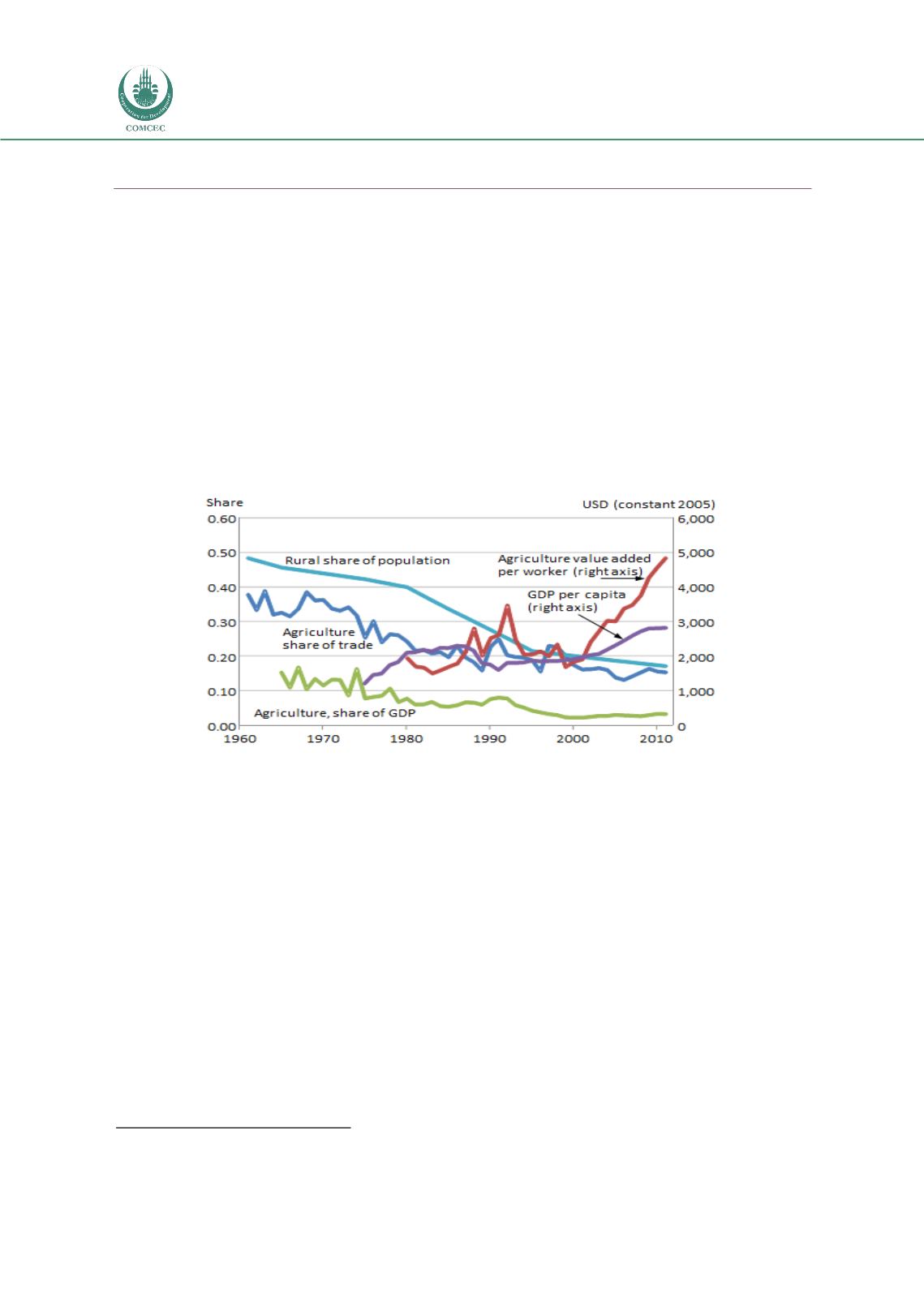

Facilitating Smallholder Farmers’ Market Access
In the OIC Member Countries
104
Jordan
The current generation of Jordanians has witnessed the country’s rapid transition to a
largely urban nation
(Figure 60). Nearly 40 percent of the population once resided in rural
areas, but by 2010 the share had dropped to about 17 percent. Yet even in 1980,
agriculture was a small part of the economy, comprising about 8 percent of GDP. Since
2000, agriculture’s share of GDP has remained at 2–3 percent.
For the last two decades of the 20
th
Century, growth in average incomes stalled in Jordan,
and incomes in the agricultural sector were volatile. Since the start of this century, average
incomes have grown overall, while income per worker in agriculture has grown to exceed
the economy-wide average. In 2010, average income per worker in agriculture was 70
percent higher than GDP per capita.
Policies and institutions
Prompted by the economic crisis of the late 1980s, Jordan took the crucial step of
rethinking its agricultural policies, which had been designed to protect local production.
That rethinking accelerated as Jordan prepared to join the WTO. Prior to the reforms, the
government had managed agriculture through a system of fixed prices and marketing
rules, overseen by the Agricultural Marketing Organization. The Agricultural Marketing
Organization determined the quantities and types of agricultural products that could be
imported and exported on a monthly basis.
184
In 1996, Jordan adopted a new policy to
limit the government’s role and rely more on markets. Jordan abolished the Agricultural
Marketing Organization, lifted import restrictions, and in March 2000 ratified all WTO
agreements.
184
Malkawi (2010).
FIGURE 60: STRUCTURAL CHANGE AND THE JORDANIAN ECONOMY, 1961–2011
Source:
World Development Indicators (World Bank 2014h).

















